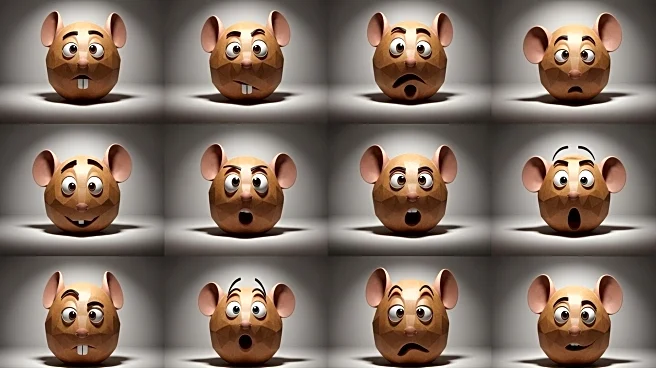What is the story about?
What's Happening?
A recent study published in Nature Neuroscience has demonstrated that mice's facial movements can reveal their problem-solving strategies, offering a non-invasive method to infer hidden thoughts. Researchers at the Champalimaud Centre for the Unknown found that analyzing subtle facial cues was as informative as tracking neural activity, suggesting that the mind leaves visible traces on the face. The study involved challenging mice with a puzzle to determine which of two water spouts provided a sugary reward, requiring them to develop strategies for decision-making. The researchers discovered that facial movements matched brain recordings in decoding these strategies, indicating that facial 'thought signatures' may be stereotyped, similar to emotions. This breakthrough provides a new avenue for research and diagnostic tools, while also raising concerns about mental privacy in an era of ubiquitous video recordings.
Why It's Important?
The findings of this study have significant implications for neuroscience research, as they offer a non-invasive method to study brain function and cognitive processes. By demonstrating that facial movements can be as informative as neural activity, the research opens up possibilities for new diagnostic tools and methods to study brain function in health and disease. However, the ability to infer cognitive states from facial movements also raises ethical concerns about mental privacy, especially given the widespread use of video recordings in society. Protecting individuals' mental privacy may become a critical issue as technology advances, necessitating discussions on regulations and safeguards.
What's Next?
The study's authors suggest that further research could explore the application of these findings in human subjects, potentially leading to new non-invasive techniques for studying brain activity. Additionally, the ethical implications of this research may prompt discussions among policymakers and researchers about the need for regulations to protect mental privacy. As the technology to decode cognitive states from facial movements advances, stakeholders in neuroscience, ethics, and privacy law may need to collaborate to address these emerging challenges.
Beyond the Headlines
The study highlights the potential for facial movements to serve as a window into cognitive processes, which could revolutionize how researchers approach brain studies. This non-invasive method could lead to advancements in understanding neurological disorders and cognitive functions without the need for intrusive procedures. However, the ability to decode thoughts from facial expressions also poses risks to privacy, emphasizing the need for ethical guidelines and protective measures in research and technology development.
AI Generated Content
Do you find this article useful?














